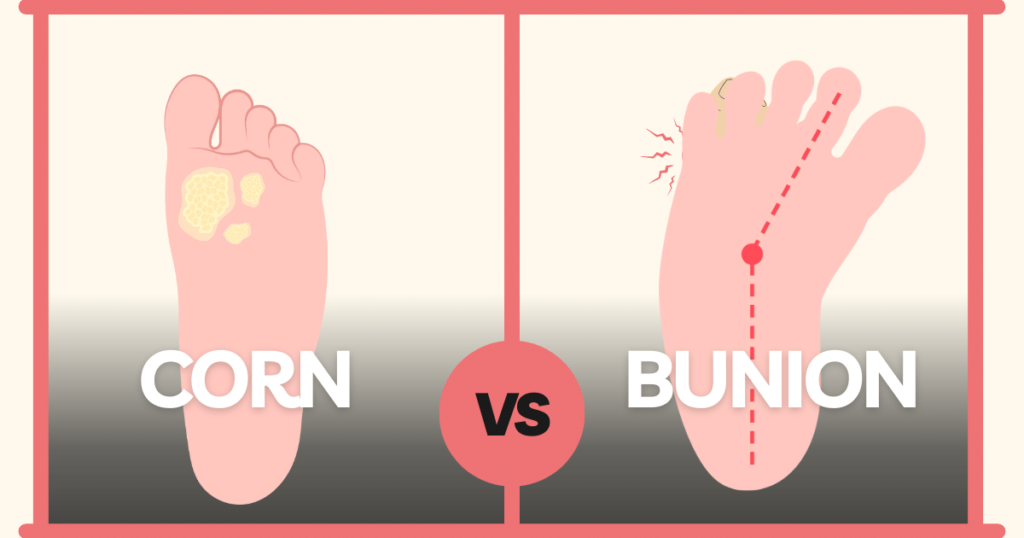
What is the difference between a corn and a bunion? While they both cause foot pain, corns and bunions have distinct causes and treatment options. In this insight, we’ll examine the key differences between these two common foot ailments.
What is a Corn?
A corn is a small, hardened area of thickened skin that develops due to friction and pressure on the skin. Corns form when bony areas of the feet rub against shoes, causing a buildup of skin in response.
Common locations for corns and calluses include the tops and sides of toes, as well as soles of the feet. Corns can range from pea-sized to very small. They may have a soft center with a harder outer edge.
What is a Bunion?
Unlike corns, bunions are a bony deformity that develops at the base of the big toe. Bunions form when the metatarsophalangeal (MTP) joint becomes misaligned, causing the big toe to bend toward the other toes. This forces the joint to protrude out, forming a bony bump.
Bunions can also become swollen and inflamed due to irritation from footwear. The skin over the enlarged joint often becomes red and sore. In some cases, bunions are hereditary and result from having flat feet or low arches.
Key Differences Between Corns and Bunions
While both are painful foot conditions aggravated by shoes, corns and bunions vary in some key ways:
Cause – Corns and calluses are caused from friction and pressure, bunions from joint misalignment.
Location – Corns develop on tops/sides of toes. Bunions always occur at the big toe MTP joint.
Appearance – Corns are small, hardened calluses. Bunions form prominent bony bumps.
Pain – Corns cause localized pain. Bunion problems result in broader joint pain.
Complications – Corns do not lead to other issues. Bunions symptoms cause decreased toe mobility over time.
Treatment Options
Treatment also differs between corns and bunions:
Corns – Removal of hardened skin using abrasive pads, followed by padding or medicated patches to prevent recurrence.
Bunions – Bunion splints, toe spacers, NSAID pain relievers, shoe inserts, or surgical intervention in severe cases.
While home treatments are often effective for corns, bunions may require medical intervention if conservative options fail. Seeking a podiatrist’s opinion is recommended.
The Takeaway
In summary, while corns and bunions both cause discomfort in the feet, they have distinct underlying causes. Corns and calluses arise from friction while bunions result from structural joint changes over time. An understanding of the key differences between these two conditions, you can seek appropriate treatment and find relief. With proactive care, painful corns and bunions can be managed for happy, healthy feet.

Lifebing is driven by an unrelenting passion for promoting health and well-being, our team is wholly committed to curating exceptional content and immersive experiences.
